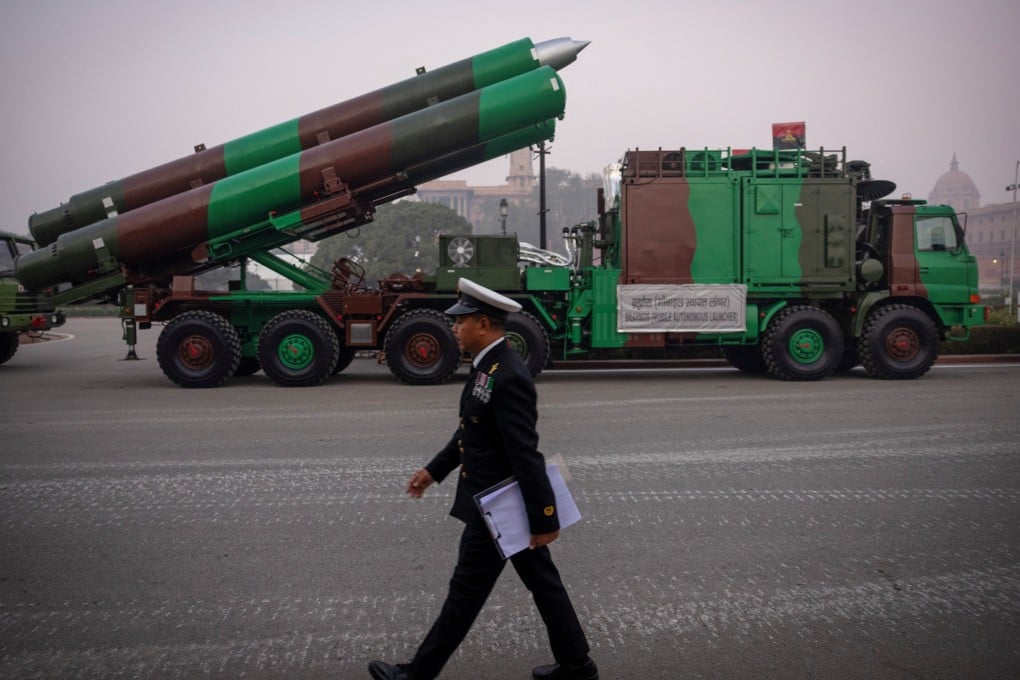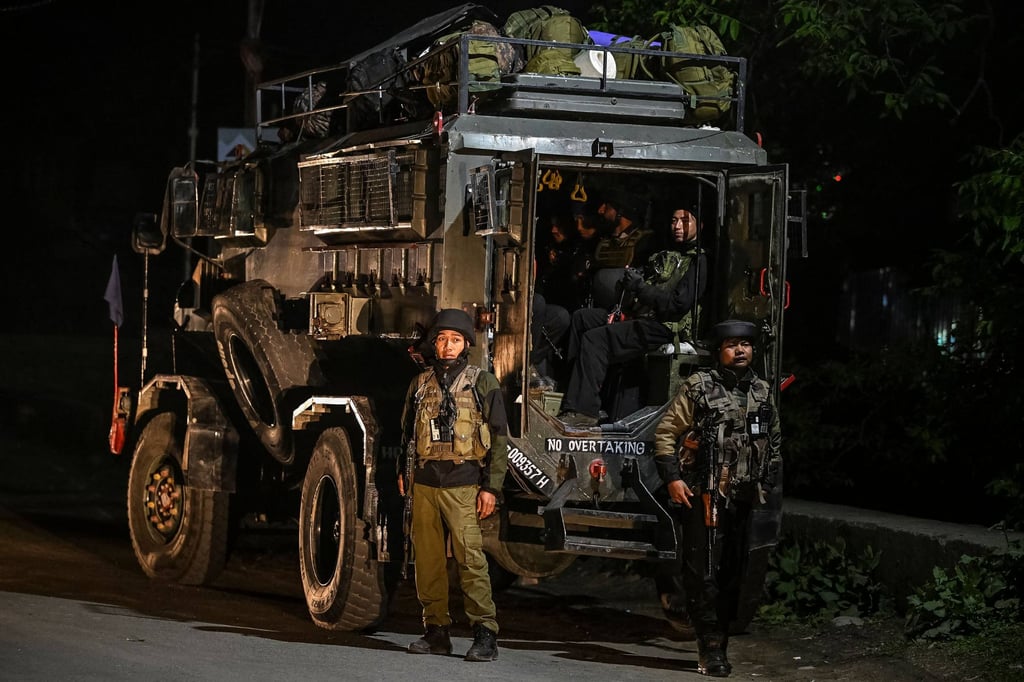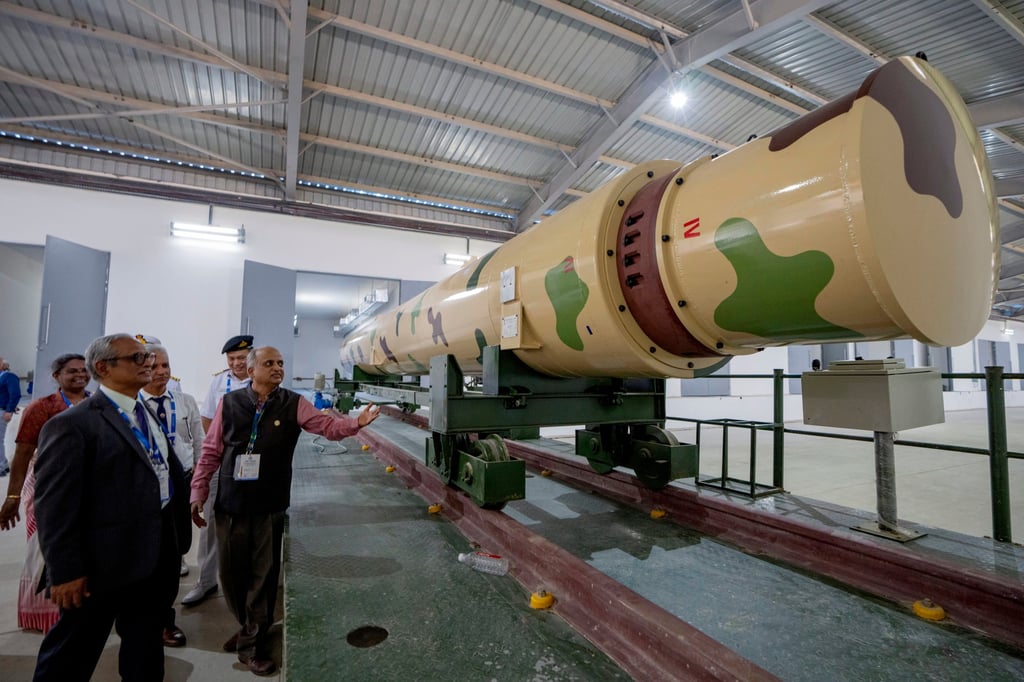- Messages
- 3,589
- Reaction score
- 1,391
- Axis Group

Date of Event:
Jul 19, 2025
India gets global buyer interest for BrahMos missile from Asia to South America
New Delhi has to expand its defence sector’s capabilities and ease relevant policies to build on the success of the missile, analysts say
Reading Time:4 minutesNEWSLETTEREvery Friday
Discover news and insights on women trailblazers, social issues and gender diversity in Asia
By submitting, you consent to receiving marketing emails from SCMP. If you don't want these, tick here

Junaid Kathju
Published: 4:30pm, 19 Jul 2025Updated: 11:40am, 20 Jul 2025
India’s BrahMos supersonic cruise missile system has reportedly drawn interest from at least 15 countries spanning from Asia to South America after its use in cross-border strikes against Pakistan enhanced the global profile of the Indian weapons industry.
While security experts acknowledge the growing clout of the industry, they say sustaining this momentum would require broader expertise, less reliance on foreign technology and more supportive policies to realise India’s potential as a global arms supplier.
Earlier this week, Defence Minister Rajnath Singh said the BrahMos missiles played an “outstanding” role in “Operation Sindoor”, India’s response to the April 22 attack near Pahalgam in Indian-administered Kashmir, which killed 26 civilians, mostly Hindu pilgrims. New Delhi has blamed Pakistan-linked militants while Islamabad denies any involvement.
Singh told reporters that 14 to 15 countries had since expressed interest in the supersonic cruise missile developed jointly with Russia.
Rajiv Kumar Narang, senior fellow at the Manohar Parrikar Institute for Defence Studies and Analyses, told This Week in Asia: “[Operation Sindoor] was a real-time learning experience that gave us inputs to improve. Once the product is proven, it becomes more acceptable in the international market.”
That credibility boost appears to be translating into potential demand. According to reports, countries showing interest in BrahMos include Thailand, Singapore, Brunei, Egypt, Saudi Arabia, the UAE, Qatar, Oman, Brazil, Chile, Argentina and Venezuela.
The Philippines signed a US$375 million deal with India in 2022, becoming the first foreign buyer of the missile system, which began to arrive in April. Vietnam and Indonesia are reportedly in talks over contracts worth US$700 million and US$450 million, respectively.

Indian troops stand guard near Pahalgam on April 22, following an attack. India deployed the BrahMos missile system after the incident. Photo: AFP
Experts believe that countries showing interest in Indian weaponry reflects India’s shift from being a largely import-dependent military force to an emerging defence exporter.
This evolution marked a strategic pivot in India’s defence policy, foreign affairs specialist Robinder Sachdev told This Week in Asia.
“Enabled by the Make in India initiative and deeper integration across the DRDO [Defence Research and Development Organisation], public-sector undertakings, and private firms, India is now building credible, battlefield-proven systems,” Sachdev said.
The use of BrahMos in Operation Sindoor provided real-time validation of India’s capabilities as its strong performance during an operational deployment was the ultimate proof of its prowess for global defence buyers, Sachdev said.
“Interest from 14–15 countries – across Southeast Asia, the Gulf, and Latin America – signals that India is now seen as a reliable, trusted supplier,” said Sachdev, founder president of The Imagindia Institute, a non-partisan Delhi-based independent think tank and research centre.
In May, India opened a new BrahMos missile plant to meet growing demand from foreign buyers. The facility in Uttar Pradesh state will produce up to 100 missiles a year.
“Purchases and negotiations [regarding BrahMos] from states including the Philippines, Vietnam, Indonesia and others have established India’s reputation in the global defence market,” said Atul Kumar, a fellow with the Observer Research Foundation’s strategic studies programme in Delhi.
Kumar, however, said the Indian government would have to curb the public sector’s dominance in weapon production and overhaul its weak marketing and export strategy.
“India has made enormous progress in exporting defence goods, especially after end-user restrictions were rationalised and private sector manufacturers were encouraged to cater to growing demand in partner states,” he added.
Chinese nationalism surges across social media as viral video mocks downed Indian jets
“However, most of the growth is happening at the component level, and whole platform sales are picking up slowly. The Indian government needs to play a proactive role through its defence attaché and representatives to push defence deals across the buyer states,” Kumar said.
India’s total defence exports rose by 12 per cent to a record 23,622 crore rupees (US$2.76 billion) in the 2024–25 financial year from 21,083 crore rupees (US$2.54 billion) in the previous year, the defence ministry said in a statement.
A wide range of items, from ammunition, arms, subsystems and systems, to components, was exported to around 80 countries in the just-concluded financial year, according to the statement.
Singh said in a social media post that Indian defence exports were approaching Delhi’s target of 50,000 crore rupees (US$6.02 billion) annually by 2029.
Walter Ladwig, a senior international-relations lecturer at King’s College London, said India’s emergence as a defence exporter was laudable but was still limited in scope.
“BrahMos is a stand-out success: a capable, high-speed missile with clear geopolitical appeal. If even a few of the reported deals go ahead, it would mark an important step for India’s export credibility,” Ladwig said.
“That said, this shouldn’t be confused with broad self-reliance. BrahMos is still a joint venture with Russia, and across most systems India remains dependent on foreign technology, especially propulsion, sensors and electronics.”

The inauguration of the BrahMos Aerospace integration and testing facility in Lucknow, Uttar Pradesh, in May. Photo: AP
BrahMos Aerospace, a joint venture between India’s DRDO and Russia’s NPO Mashinostroyenia, is Delhi’s first defence production partnership of its kind with a foreign government. The Indian government holds a 50.5 per cent stake in the venture, with Russia owning the remaining 49.5 per cent.
India’s ambitious goal to become Asia’s top arms exporter was not expected to be realised in the near term, Ladwig said.
“China retains a dominant position in volume, pricing, and established networks. But India may not need to match China on quantity. India’s competitive edge may lie not in volume, but in trust, especially with buyers in key regions like Southeast Asia and the Gulf who value strategic alignment,” he said.
“BrahMos shows what’s possible, but it’s only a beginning. To sustain this momentum, India will need broader capability, reliable delivery, and consistent political support,” Ladwig added.
Sachdev said that to match China in terms of volume or South Korea for scale, India must diversify its offerings, scale up its manufacturing expertise, and streamline export policies.
“While China leads with full-spectrum systems and South Korea with Nato-standard platforms and co-production deals, India is carving out a niche through precision systems like BrahMos and its democratic, non-aligned appeal,” he added.



